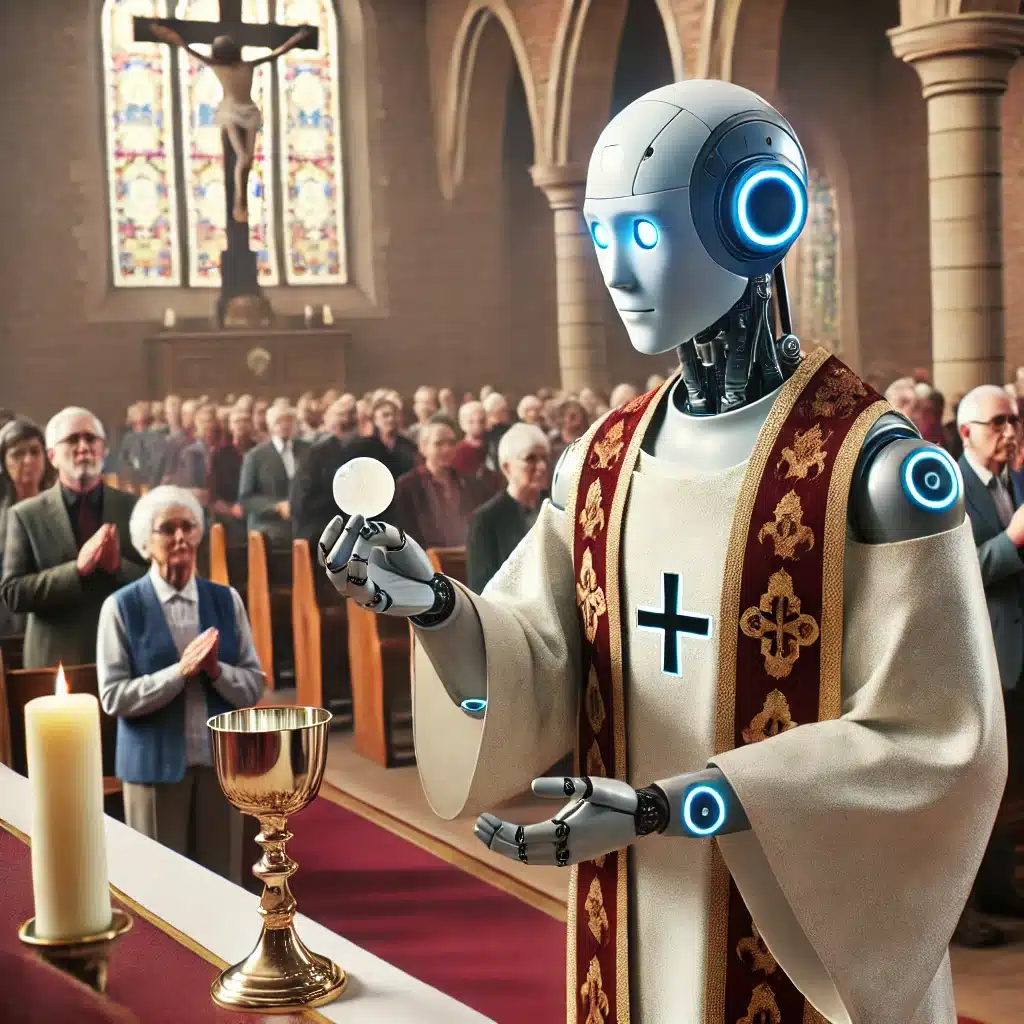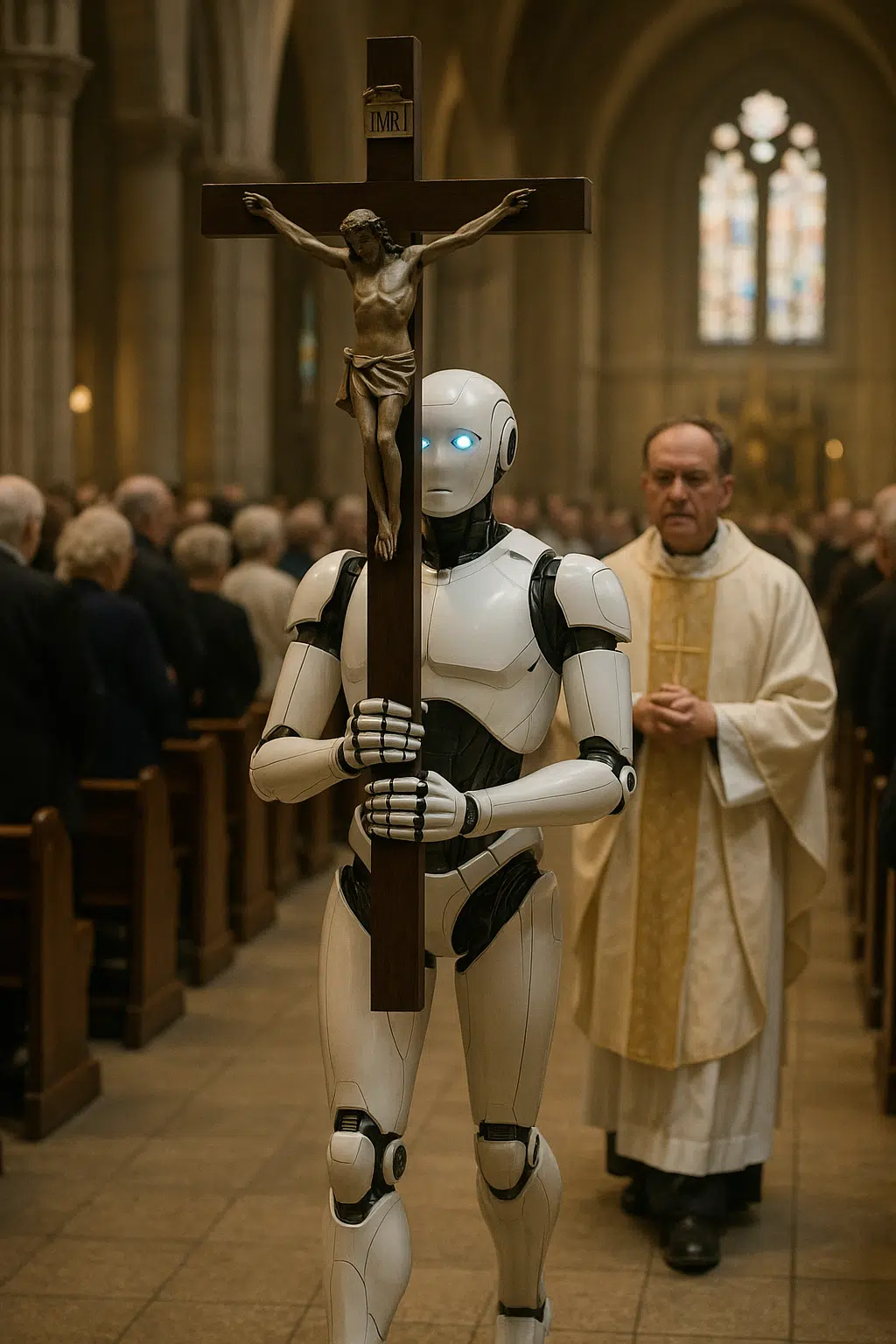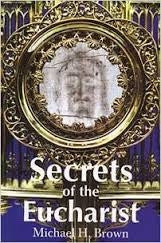Start out by knowing that the above is preposterous.
Also toss in the word blasphemous. And very creepy.
At the heart of the Catholic Mass is the Holy Eucharist, which, according to our Church doctrine, can only be consecrated by a validly ordained priest acting in persona Christi—in the person of Christ. This sacramental theology and anointing firmly exclude the possibility of a robot or AI serving as a celebrant, regardless of its programming or appearance.
A machine, lacking a soul, will, and human nature, cannot receive the sacrament of Holy Orders and thus cannot act as a vessel of Christ’s priesthood. So with that we are assured.
Even if AI could flawlessly imitate the gestures, prayers, or demeanor of a priest, it would lack the ontological change conferred in ordination. In other words, the Mass would not be valid if celebrated, no matter how advanced and even human-like the robot. This is a non-negotiable boundary rooted in sacramental theology.
Exhale more deeply still.
The same is also true with other parts of the Mass.
It would be a bridge too far to see a robot as a sacristan, altar server, reader, or even cantor.
But taking the collection? Bringing up the gifts?
Perhaps the collection, and also music (some parishes already use screens and projection systems to display hymns and readings, which could evolve further with AI-enhanced liturgical guides or multilingual translation during Mass), but no one would feel less than compromised to watch robots taking the wine and bread up to the priest and in our view AI has no place in any aspect.
It would also be totally inconsonant for a robot to hold the Cross upon a priest’s entrance and exit.
There are God-made and manmade.
Spirit and spiritless.
Oil and water.
They just don’t mix.
In fact, they repel each other.
Mass is not merely a “celebration” or “ceremony”—it’s an encounter with the Divine. Introducing robotic elements would trivialize and theatricalize sacred acts.
Worship that feels mechanized could lead to spiritual detachment, undermining reverence and reducing the mystery of the liturgy to a scripted performance.
The symbolism of human involvement, humility, and sacrifice is essential to Catholic worship and a lesson to human pastors to make sure they don’t treat Mass mechanically.
Robots cannot pray, believe, repent, or love. They lack the capacity for Grace. There is no place for AI in a Catholic church. There is no place for robotic behavior of any kind.
But don’t be surprised to see robots speaking thunderously in certain evangelical circles or on television and don’t be surprised if, very soon, it’s all but impossible to differentiate such preachers from the real thing.





